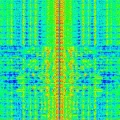jks
About
- Username
- jks
- Joined
- Visits
- 36,766
- Last Active
- Roles
- Member, Administrator, Moderator
- Points
- 673
Reactions
-
10ch receiver mode ?
-
v1.250: 20 kHz bandwidth mode, 10/100 Ethernet speed selection, k/M frequency/passband suffixes
I didn't mention this, but the new Ethernet speed setting is "sticky". So when the Beagle is powered-up or rebooted the Ethernet will come up in 100 Mbps mode by default. But when the Kiwi server starts and sees 10 Mbps mode has been set in the configuration it will change the interface speed back down to 10.
There is also a new Linux command 'e' that is an alias for 'ethtool eth0' to show the interface state including the speed setting. Also 'e10' and 'e100' for manually setting the speeds. -
v1.250: 20 kHz bandwidth mode, 10/100 Ethernet speed selection, k/M frequency/passband suffixes
I didn't mention this, but the new Ethernet speed setting is "sticky". So when the Beagle is powered-up or rebooted the Ethernet will come up in 100 Mbps mode by default. But when the Kiwi server starts and sees 10 Mbps mode has been set in the configuration it will change the interface speed back down to 10.
There is also a new Linux command 'e' that is an alias for 'ethtool eth0' to show the interface state including the speed setting. Also 'e10' and 'e100' for manually setting the speeds. -
v1.250: 20 kHz bandwidth mode, 10/100 Ethernet speed selection, k/M frequency/passband suffixes
-
v1.250: 20 kHz bandwidth mode, 10/100 Ethernet speed selection, k/M frequency/passband suffixes
Elite: good point. What I can do is add an little icon and "20 kHz" to the last line of the listing along side the software version, GPS and antenna switch indicators. You can't rely on the user count saying "N / 3 users" to mean the Kiwi is in 3 channel, 20 kHz mode because the "3 users" number might simply be a 4 channel, 12 kHz Kiwi with one channel password protected (which is not reflected in the count).






